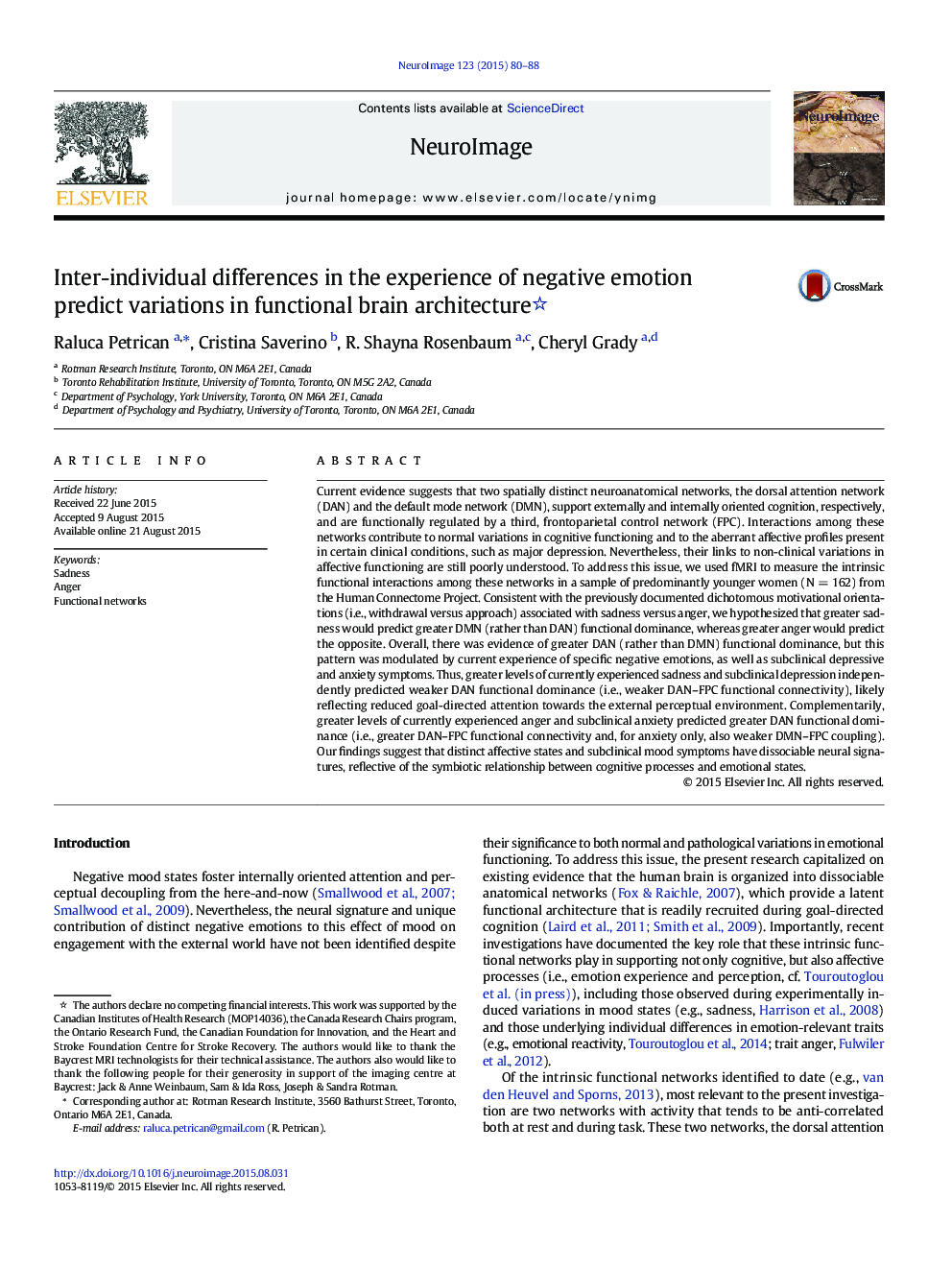| کد مقاله | کد نشریه | سال انتشار | مقاله انگلیسی | نسخه تمام متن |
|---|---|---|---|---|
| 6024726 | 1580884 | 2015 | 9 صفحه PDF | دانلود رایگان |

- We investigated relations between intrinsic internetwork connectivity and emotion experience.
- There was greater global dorsal attention (DAN) than default mode (DMN) network dominance.
- Greater sadness and subclinical depression predicted weaker DAN functional dominance.
- Greater anger and subclinical anxiety predicted stronger DAN functional dominance.
Current evidence suggests that two spatially distinct neuroanatomical networks, the dorsal attention network (DAN) and the default mode network (DMN), support externally and internally oriented cognition, respectively, and are functionally regulated by a third, frontoparietal control network (FPC). Interactions among these networks contribute to normal variations in cognitive functioning and to the aberrant affective profiles present in certain clinical conditions, such as major depression. Nevertheless, their links to non-clinical variations in affective functioning are still poorly understood. To address this issue, we used fMRI to measure the intrinsic functional interactions among these networks in a sample of predominantly younger women (NÂ =Â 162) from the Human Connectome Project. Consistent with the previously documented dichotomous motivational orientations (i.e., withdrawal versus approach) associated with sadness versus anger, we hypothesized that greater sadness would predict greater DMN (rather than DAN) functional dominance, whereas greater anger would predict the opposite. Overall, there was evidence of greater DAN (rather than DMN) functional dominance, but this pattern was modulated by current experience of specific negative emotions, as well as subclinical depressive and anxiety symptoms. Thus, greater levels of currently experienced sadness and subclinical depression independently predicted weaker DAN functional dominance (i.e., weaker DAN-FPC functional connectivity), likely reflecting reduced goal-directed attention towards the external perceptual environment. Complementarily, greater levels of currently experienced anger and subclinical anxiety predicted greater DAN functional dominance (i.e., greater DAN-FPC functional connectivity and, for anxiety only, also weaker DMN-FPC coupling). Our findings suggest that distinct affective states and subclinical mood symptoms have dissociable neural signatures, reflective of the symbiotic relationship between cognitive processes and emotional states.
Journal: NeuroImage - Volume 123, December 2015, Pages 80-88